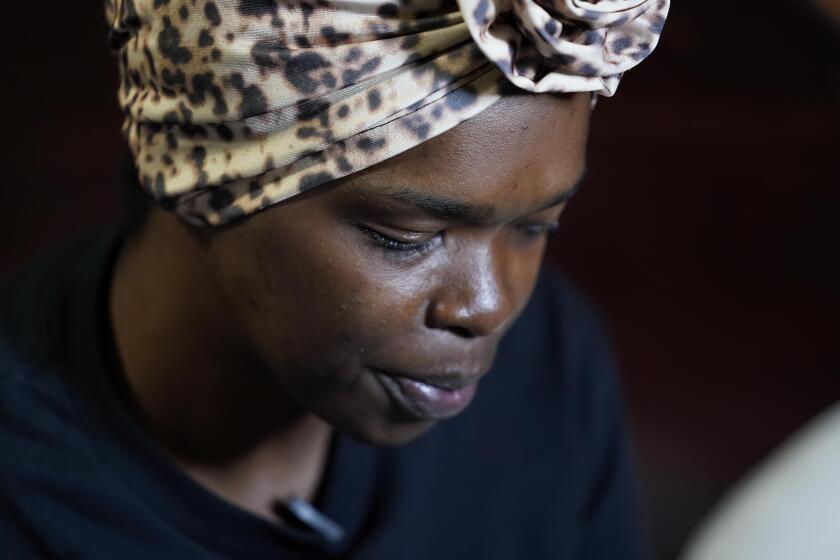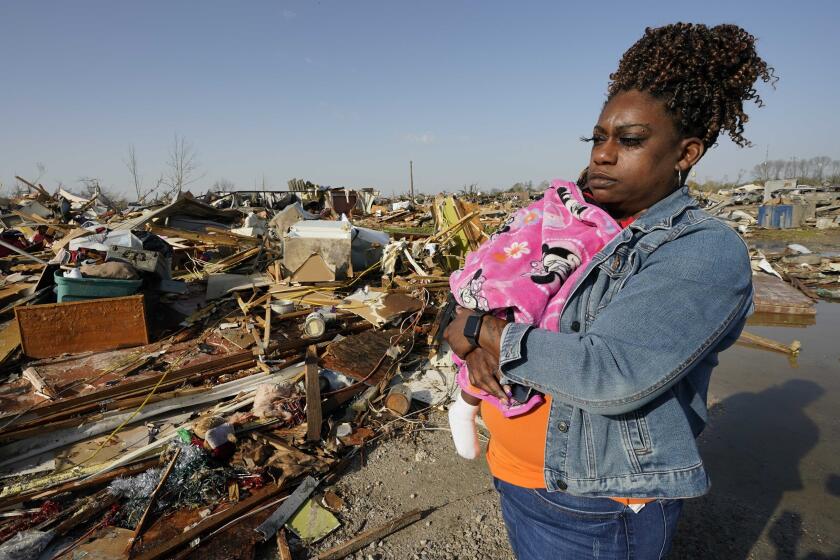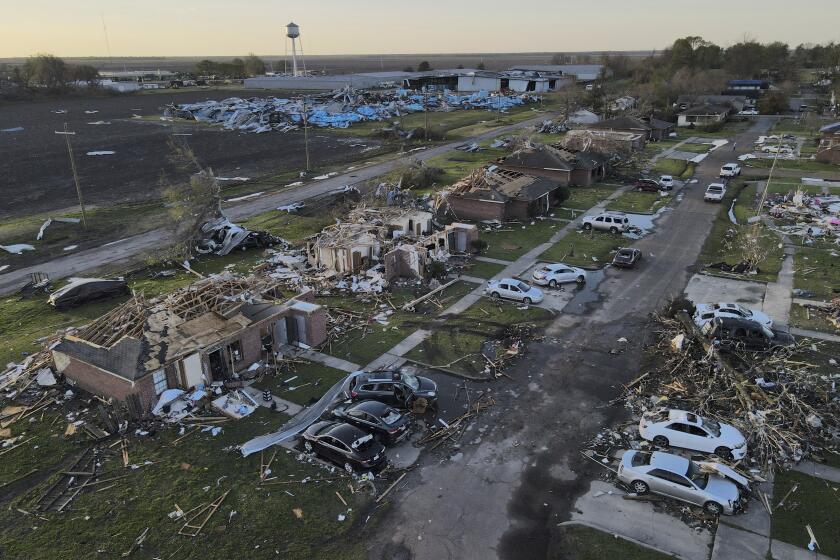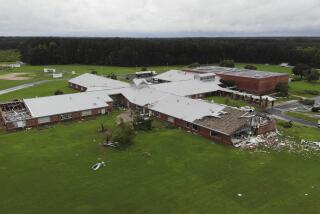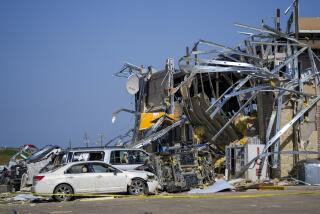Homes that become deadly: Tornadoes kill disproportionately more in mobile homes
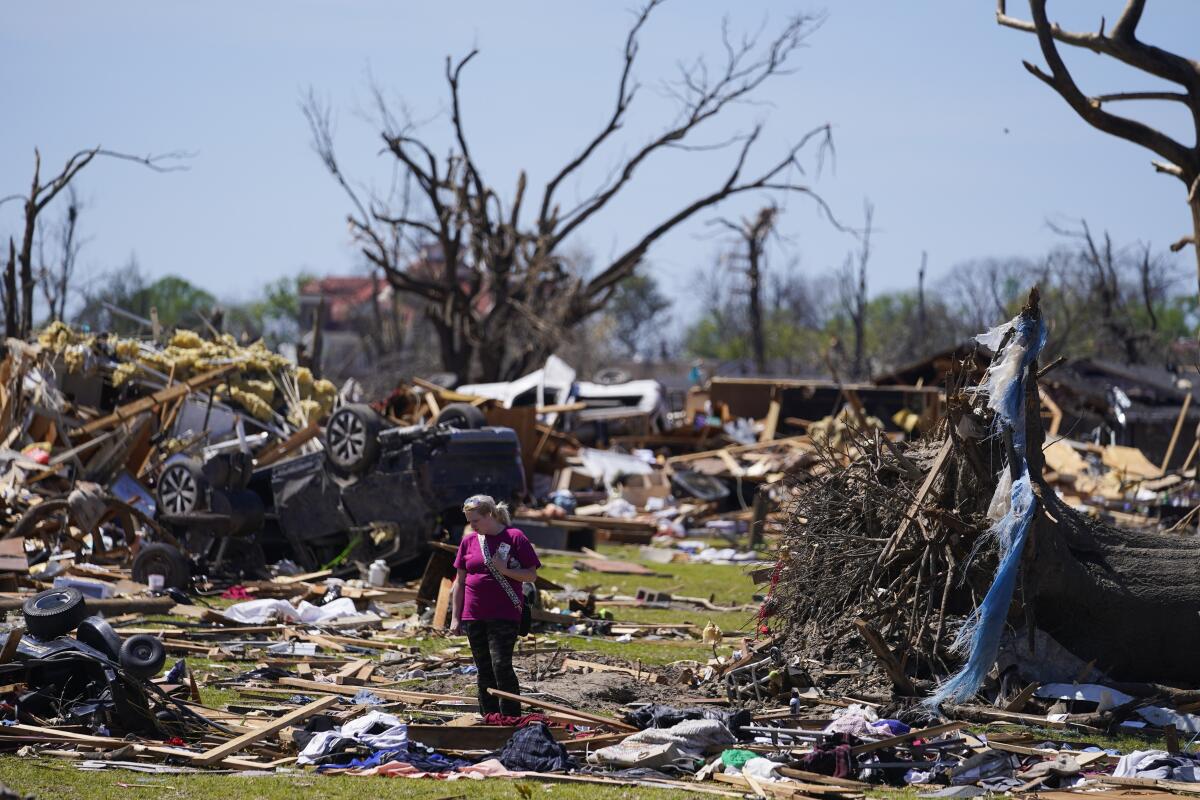
ROLLING FORK, Miss. — Many were not just killed at home. They were killed by their homes.
Angela Eason had visited Brenda Odoms’ tidy mobile home before. It was a place where Odoms, who had many tragedies in her life, felt safe.
In March, a tornado ripped through this small Mississippi town and people in mobile or manufactured homes were hit the hardest. Inside a mobile morgue, Eason, the county coroner, examined Odoms’ gaping fatal head wound. Odoms was found just outside of her collapsed mobile home that was tossed around by a tornado. Blunt force trauma killed her.
“The one place she felt safe she was not,” Eason said. Fourteen people died in that Rolling Fork tornado, nine of them, including Odoms, were in uprooted manufactured or mobile homes.
Tornadoes in the United States are disproportionately killing more people in mobile or manufactured homes, especially in the South, often victimizing some of the most socially and economically vulnerable residents.
Since 1996, tornadoes have killed 815 people in mobile or manufactured homes, representing 53% of all the people killed at home during a tornado, according to an Associated Press data analysis of National Oceanic and Atmospheric Administration tornado deaths. Meanwhile, less than 6% of America’s housing units are manufactured homes, according to the U.S. Census Bureau.
Tornadoes in the United States are disproportionately killing more people in mobile or manufactured homes, especially in the South.
Although the dangers of tornadoes to mobile homes have long been known, and there are ways to mitigate the risk, the percentage of total tornado deaths that happen in mobile homes has been increasing. Part of the problem is that federal housing rules that call for tougher manufactured home standards, including anchoring, apply only in hurricane zones, which is most of Florida and then several counties along the coast. Those are not the areas where tornadoes usually hit.
Auburn University engineering professor David Roueche called manufactured homes in inland places “death traps compared to most permanent homes” when it comes to tornadoes.
This year, at least 45 of the 74 people killed in the U.S. by tornadoes were in some form of manufactured housing when they died, according to NOAA data.
The manufactured housing industry — which disputes that there’s any disproportionate danger — insists on calling the structures manufactured homes if they are built after hurricane-based federal standards in 1976 and mobile homes if they are built before, saying age of the home matters.
Tornado experts say most tornadoes should be survivable.
“You just have to be in some structure that’s attached to the ground. And then no matter what the tornado throws at you, you have really good odds,” said NOAA social scientist Kim Klockow McClain.
But even the weakest tornadoes are killing people in mobile homes in large numbers, more than a dozen experts in meteorology, disasters and engineering said.
More than 240 people in mobile homes in the last 28 years have died in tornadoes with winds of 135 mph or less, the three weakest of the six categories of twisters, the AP analysis found. That’s 79% of the deaths at home in the weaker tornadoes.
Tornadoes tore through Mississippi as severe weather that produced hail the size of golf balls moved through several Southern states.
“The whole structure is rolling or flying through air. You’ve got dressers falling on top of you. You’ve got the entire structure that’s trying to crush you,” Roueche said.
The South has mobile homes scattered about the countryside in ones and twos, making centralized tornado shelters less effective and less likely to be built, said Vanderbilt University tornado expert Stephen Strader and Northern Illinois meteorology professor Walker Ashley.
Anchoring mobile homes to the ground is key, and the strongest anchoring is more expensive, said former Alabama emergency official Jonathan Gaddy, now a professor at Idaho State University.
“Why does that matter? Well, it explains why we haven’t fixed the problem with anchoring, because nobody can fix the problem and still make money. That’s the bottom line,” Gaddy said.
Lesli Gooch, chief executive of the Manufactured Housing Institute, said the industry is “very clear” about the importance of anchoring.
High poverty rates in counties struck by the massive tornado that pushed through Mississippi on Friday add to the challenges of recovery.
“We’re very focused on making sure that there are minimum installation standards in the states,” Gooch said.
Northern Illinois’ Ashley said the lack of state regulations and inspections, especially in much of the South, is a big problem.
Improvements in federal codes that went into effect in 1976, 1994 and 2008 make a big difference, Gooch said, contending that the NOAA data that the AP analyzed and that scientists use lump different ages of manufactured homes together and tar them with the problems of the oldest ones.
Vanderbilt’s Strader said Gooch’s argument that newer mobile homes are safer is proved wrong by a study that he and Roueche did of the fatalities of a March 2019 tornado in Alabama that was published in the journal Natural Hazards Review. In that tornado, 19 of the 23 deaths were in manufactured homes, all built after 1994 and all due to lack of anchoring, he said.
If Gooch were right, the percentage of tornado deaths at home in mobile homes would be falling with time, and they are not, said Harold Brooks, NOAA National Severe Storms Laboratory tornado scientist.
One of the big problems, Strader, Ashley and Roueche said, is that the federal regulations that call for tougher manufactured home standards, including anchoring, apply only in hurricane zones. Most tornado-prone areas, including almost all of Alabama, Oklahoma, Missouri, Texas and Mississippi, are in the zone with the most lax standards.
A lack of shelters is another big issue. A relatively new law in Alabama could be a model for states to address this. The law gives liability protection to buildings such as churches and stores that open up in an emergency as a shelter if specifically built shelters aren’t available.
When this year’s first deadly tornado struck just outside Montgomery, Ala., Autauga County had about 30 minutes’ warning but no “safer places” to send people, said Ernie Baggett, the county’s former emergency management chief. Seven people in mobile homes died.
The tornado continued into neighboring Elmore County, which had already set off its 30 warning sirens, used a mass notification system to make 16,772 calls to phones in the danger area and opened up 16 churches and other safer places.
People went into the temporary shelters. Homes were destroyed, but no one died.
More to Read
Sign up for Essential California
The most important California stories and recommendations in your inbox every morning.
You may occasionally receive promotional content from the Los Angeles Times.
